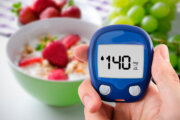Having been raised by teachers, I vividly remember my parents talking about food in the context of what students had to eat — or didn’t. My Mom and Dad were often worried that some of their students may not have food to eat for dinner or enough food to eat over the weekend.
Today, many of the conversations have changed from if students are getting enough food to whether children really need certain types of food. Meanwhile, food insecurity has not gone away. In 2016, the U.S. Department of Agriculture estimated that approximately 15.6 million American households were food-insecure, or lacking food to meet the needs of the family. Unfortunately, the “war on obesity” may have shifted our concerns from supporting feeding development and adequate nourishment to perceived nutrition quality and weight. Dr. Katja Rowell, family physician and coauthor of the book “Helping your Child with Extreme Picky Eating,” suggests that “we are facing a childhood feeding crisis, not an ‘obesity’ crisis.”
In our dieting-obsessed culture, many people feel that children need a tremendous amount of oversight while eating. But research suggests that kids have the ability to self-regulate their own intake. Ellyn Satter’s Division of Responsibility in Feeding, which supports eating competence by defining and supporting the roles of parents and children in feeding, is considered a best practice by agencies like the Academy of Nutrition and Dietetics, the American Academy of Pediatrics, and the USDA Food and Nutrition Service, yet few school nutrition policies embrace it.
[Read: Why Do Kids Eat When They’re Not Hungry?]
Current nutrition policy supports the demonizing of foods using superheroes like fruits and vegetables to combat evil villains like sweets and french fries. As a mom and dietitian who’s worked in the field of disordered eating for more than 15 years, I know the damage that food shaming, controlling or policing can cause. Research shows food-related parenting practices that involve either pressuring kids to eat certain foods or food restrictions tend to backfire. These controlling patterns around food consumption may ultimately sabotage a child’s ability to self-regulate and predispose them to weight concerns and disordered eating practices. The same could be said for policing foods in a child’s lunchbox based on an individual perception of healthful foods or harmful nutrition policies in schools.
Portland-based registered dietitian and mother, Jamie Lee, shares her own experience of how policing her child’s lunchbox has been harmful: “I can speak to my son’s experience last year, where he was shamed in the lunchroom for having a mini dark chocolate PB cup in his lunchbox. This led to him coming home in tears,” she says. “He was anxious for the rest of the school year about what was or wasn’t in his lunch.” Lee says she realizes this wasn’t the intended outcome for the school, but that it’s important to consider how food policing creates unnecessary worry and anxiety surrounding food. “It also prevents children from having a healthy relationship with food, including sugar,” she says; and Lee adds that it undermines her as a parent as well.
[Read: ADHD and Eating Disorders: What You Should Know.]
Teachers, parents and health professionals are all trying to do the best they can with the information they have. But we can do better. We can work together to prevent harm and promote nourishment. Here some are tips and reminders that I’ve found are helpful as a parent and nutrition professional, and when working with schools:
— Communicate early and often. In our “get to know the family” worksheets for my daughter’s school, we told the teacher that our family doesn’t reward with food or categorize food as “good” or “bad.” We also include a laminated notecard in her lunchbox that states that she can choose to eat whatever food from her lunchbox in whatever order she desires, even if she eats “dessert” first. It may never be seen, but if she’s pressured to eat in a way that doesn’t allow her to trust herself, she knows she can show it. It doesn’t mean I pack cakes, cookies and candies every day, it means that I trust her to eat from what I’ve packed and I trust myself to provide for her.
— Remember that children eat based on preference. They don’t make food choices based on what’s considered healthy or because they’re pressured to eat certain foods. If we want them to eat a greater variety of foods, we must expose them to more foods for exploration.
— Avoid categorizing foods as good or bad. Kids are concrete thinkers, and more vulnerable to internalizing these rules. For example, if eating flavored chips is considered “bad” that could translate into “I am a bad kid” or “this means I am not healthy.” When children consume what’s perceived as a “bad food,” they often experience guilt and shame. It may also lead to sneaking, hiding or bingeing on those foods.
— It’s OK to give kids reminders to use lunchtime for fueling instead of playing or socializing.
— Avoid blaming poor behavior on not eating healthful foods. Behavior problems are an issue for teachers to address with parents. Parents know their children best and can make changes if foods at lunch were inadequate (we all know kids can get hangry, too) or if other factors are impacting their behavior (such as not getting enough sleep or family concerns).
[See: 12 Questions You Should Ask Your Kids at Dinner.]
Parents have the primary responsibility to define what health will look like for the family regardless of nutrition policy. Some children may have anxiety, feeding disorders or other health concerns that make their “healthy” lunch look very different than the next child. Some parents define a dessert as perhaps a piece of chocolate, while another may consider graham crackers a dessert-like food.
In my family, we simply say “food is food.”
More from U.S. News
What 10 Nutritionists Learned About Cooking From Their Moms
The Trouble With Food Policing in Schools originally appeared on usnews.com







